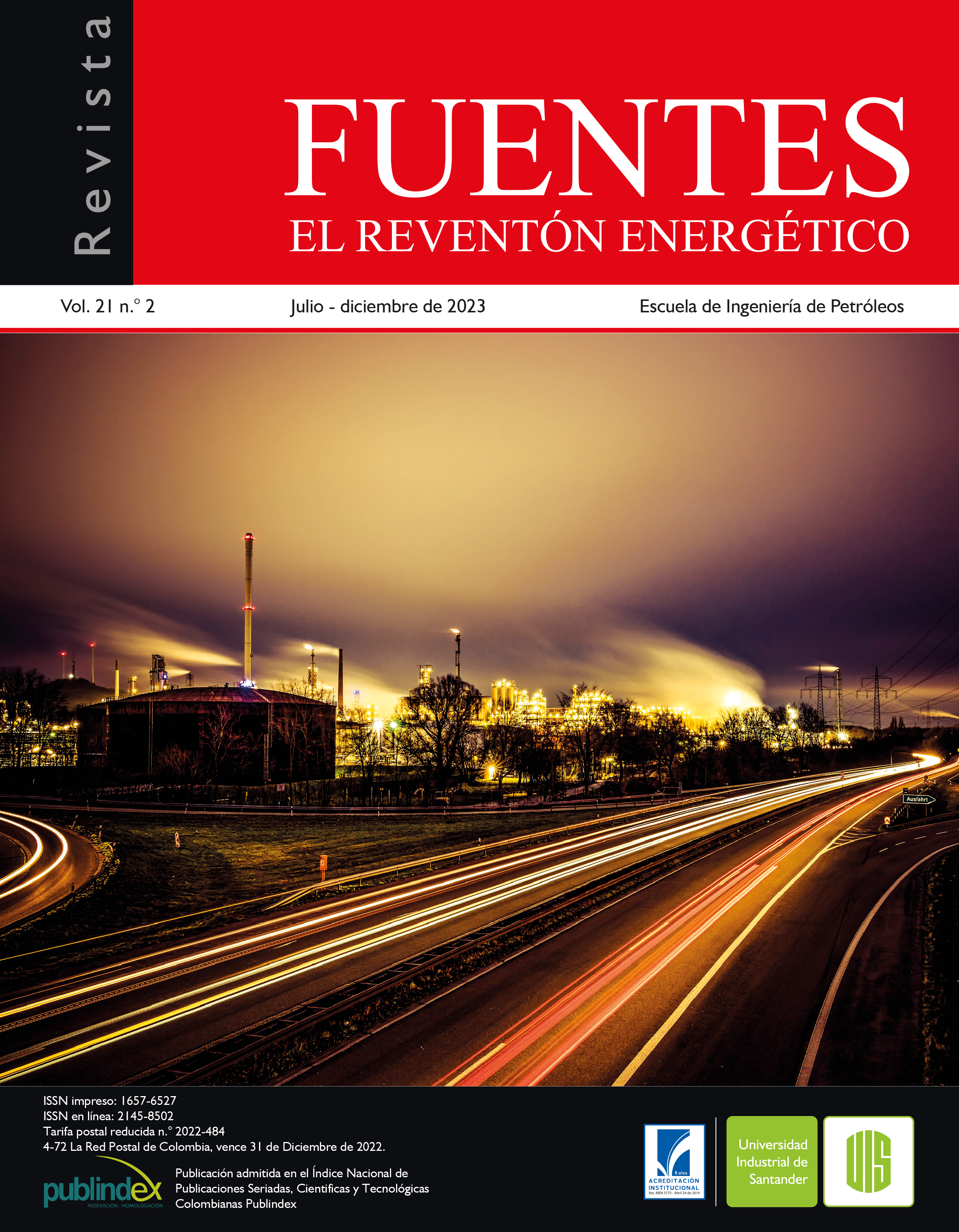Published 2023-08-29
How to Cite

This work is licensed under a Creative Commons Attribution 4.0 International License.
Abstract
Strategies focused on solving the drawbacks of a mature field must consider production decline, which is paramount when considering future investments to maintain the field’s competitiveness and profitability. B49 is an oil field with the typical problems of a mature field, management aimed at increasing the recovery factor and the implementation of an energy efficiency model were the axes to reduce OPEX and achieve a barrel with a production cost of 5.20 USD. The main objective of waterflooding in the field is to maximize oil recovery. Formation water from the north and south zones of B49 is used in waterflooding which increased the recovery factor from 21% to 26%.
In Ecuador, the associated gas is not fully exploited. For this reason, its flaring is an accepted practice; however, since 2009 the Ecuadorian State Oil Company has been implementing an ambitious Energy Efficiency program called Optimization of Electricity Generation and Energy Efficiency (OGE&EE for its acronym in Spanish), which is a comprehensive development of generation, distribution and transmission of electricity, as well as the development of facilities for the collection and transportation of associated gas. OGE&EE consists of a group of projects, covering an area of 25,000 km2, 17 oil blocks, 56 oil fields and more than 66 facilities, to date the program results are:
• Installation of multiple generation plants with a combined capacity of 325MW, 95MW and can use associated gas as fuel.
• 200 km of electric energy transmission and distribution facilities.
• Installation of 17 km of gas pipelines out of a total of 100 km, upgrading of existing facilities by implementing waste heat recovery.
• The OGE&EE Program has also interconnected the oil industry’s power grid to the national grid, which helps optimize national renewable energy (hydropower).
In 2015 the Ecuadorian oil company joined the World Bank initiative “Zero Routine Flaring by 2030”, the Government of Ecuador also joined this initiative in 2018, and as part of PAM EP’s Energy Efficiency program since 2015 it has been working to develop projects and financial solutions to increase power generation with associated gas and decrease gas flaring facilities
(flare gas).
The production of 12 wells is used for electricity generation, the daily energy demand is an average of 3MW (72 MWh per day). B49’s electricity generation meets the efficiency objectives by using gas in high efficiency generators to cover 100% of the energy needs; the field uses 194 MMcf of gas per year, stops emitting 20 MTon CO2 eq/KWH and saves 420 M USD/year for unconsumed diesel. Problems such as pressure depletion in producing sands, water injection, BSW increase, gas availability, gas flaring limitation, pressure maintenance facilities and gas distribution are issues addressed in this research.
Downloads
References
- Afi, F. N., Gunawan, H., Widiatmo, R., Waskito, L.B., Nugroho, P., Luthfan, M., Prayogo, R., & A, Suryana. (2017). How to Solve High Water Cut Well Problem in Mature Oil Field, Case Study: Application of Modified Completion Fluid Treatment in WW D-29, WW H-12, II A-22 Wells. SPE/IATMI Asia Pacific Oil & Gas Conference and Exhibition, Jakarta, Indonesia. https://doi.org/10.2118/187009-MS
- Aregbe, A. (2017). Natural Gas Flaring – Alternative Solutions. World Journal of Engineering and Technology, 5 (1). https://doi.org/10.4236/wjet.2017.51012
- Elvidge, C.D., Bazilian, M.D., Zhizhin, M., Ghosh, T., Baugh, K., & Hsu, F. (2018). The potential role of natural gas flaring in meeting greenhouse gas mitigation targets. Energy Strategy Reviews, 20, 156-162. https://doi.org/10.1016/j.esr.2017.12.012
- Emam, E.A. (2015). Gas Flaring in Industry: An Overview. Petroleum & Coal, 57 (5), 532-555. https://www.vurup.sk/na_stiahnutie/gas-flaring-industry-overview/?tmstv=1692731316
- Farina, M. (2011). Flare Gas Reduction - Recent global trends and policy considerations. GE Energy. https://www.yumpu.com/en/document/read/5166624/flare-gas-reduction-ge-energy
- Gervet , B. (2007). Gas Flaring Emission Contributes to Global Warming. Luleå University of Technology. https://www.ltu.se/cms_fs/1.5035!/gas%20flaring%20report%20-%20final.pdf
- Goudarzi, Ali., Zhang, Hao., Varavei, Abdoljalil., Hu, Yunpeng., Delshad, Mojdeh., Bai, Baojun., & Sepehrnoori, Kamy. (2013). Water Management in Mature Oil Fields using Preformed Particle Gels. SPE Western Regional & AAPG Pacific Section Meeting Joint Technical Conference, Monterey, California, USA. https://doi.org/10.2118/165356-MS
- Madueme, S. (2010). Gas Flaring Activities of Major Oil Companies in Nigeria: An Economic Investigation. International Journal of Engineering Science and Technology, 2 (4), 610-617. https://www.researchgate.net/publication/50273834_Gas_Flaring_activities_of_major_oil_companies_in_Nigeria_An_economic_investigation
- Ojijiagwo, E., Odouza, C., & Emekwuru, N. (2016). Economics of Gas to Wire Technology Applied in Gas Flare Management. Engineering Science and Technology, an International Journal, 19 (4), 2109-2118. https://doi.org/10.1016/j.jestch.2016.09.012
- Ríos-Mercado, R.Z., & Borraz-Sánchez, C. (2014). Optimization problems in natural gas transportation systems: A state-of-the-art review. Applied Energy, 147 (1), 536-555. https://doi.org/10.1016/j.apenergy.2015.03.017
- Sangsaraki, M.E., & Anajafi, E. (2015). Design Criteria and Simulation of Flare Gas Recovery System. International Conference on Chemical, Food and Environment Engineering. https://pdf4pro.com/amp/view/design-criteria-and-simulation-of-flare-gas-recovery-system-510e64.html
- Tournier, E., Jaffres, B., Geoge, B., & Sabally, L. (2010). Production Monitoring and Optimization on A Mature Field. Abu Dhabi International Petroleum Exhibition and Conference. https://doi.org/10.2118/137969-MS
- Zadakbar, O., Vatani, A., & Karimpour, K. (2008). Flare Gas Recovery in Oil and Gas Refineries. Oil & Gas Science and Technology - Revue d'IFP Energies nouvelles, 63 (6), 705 – 711. https://doi.org/10.2516/ogst:2008023
